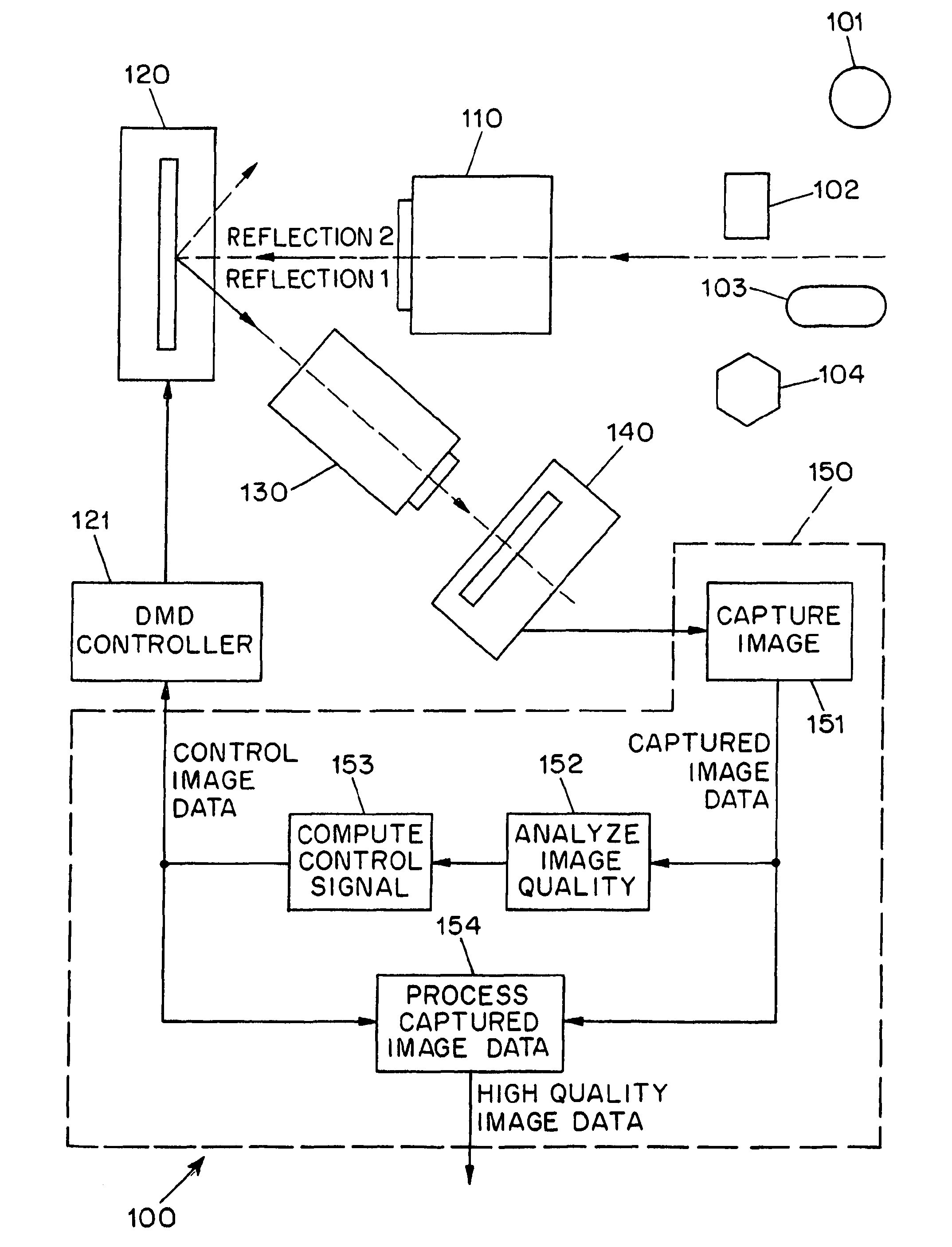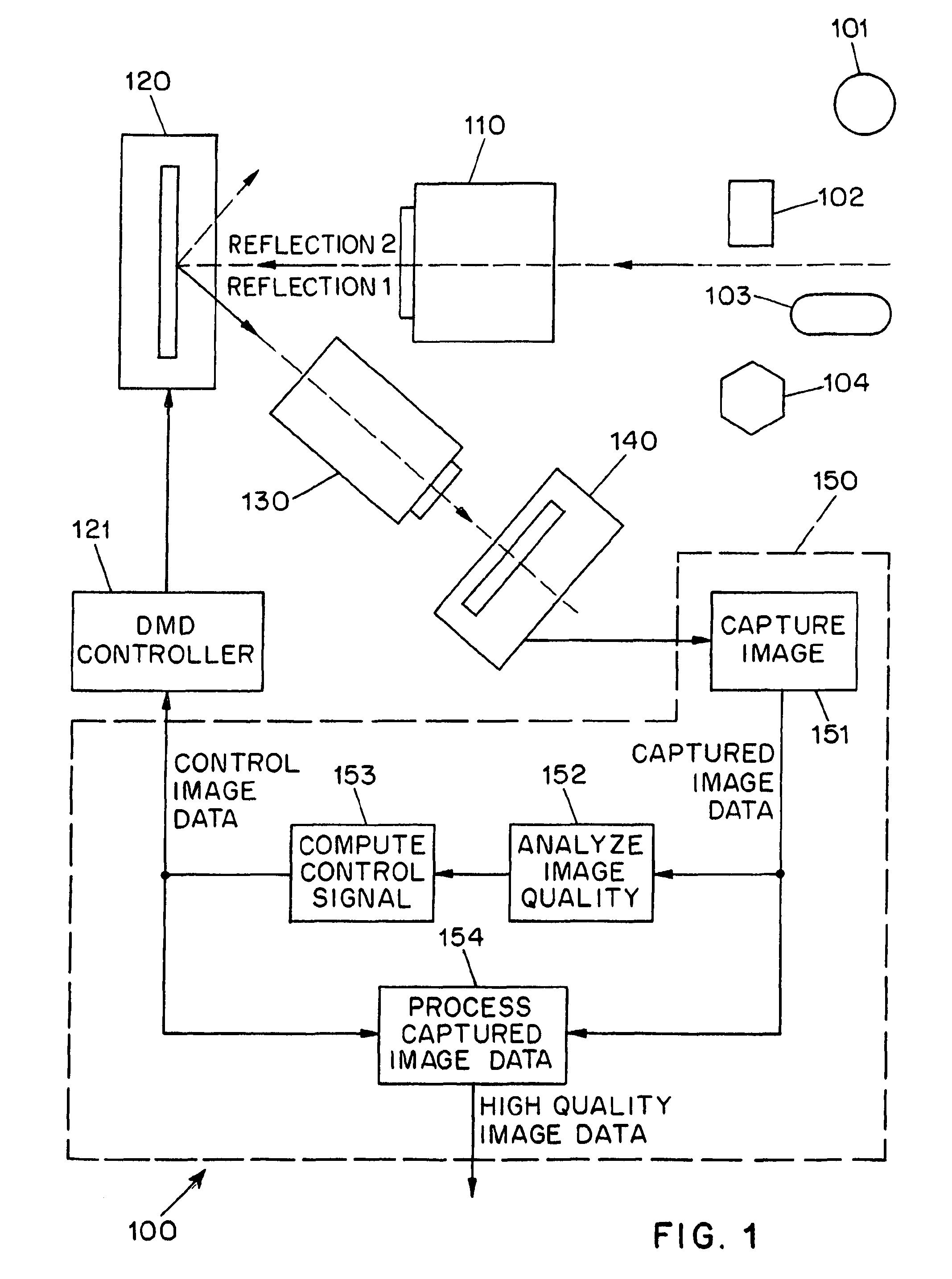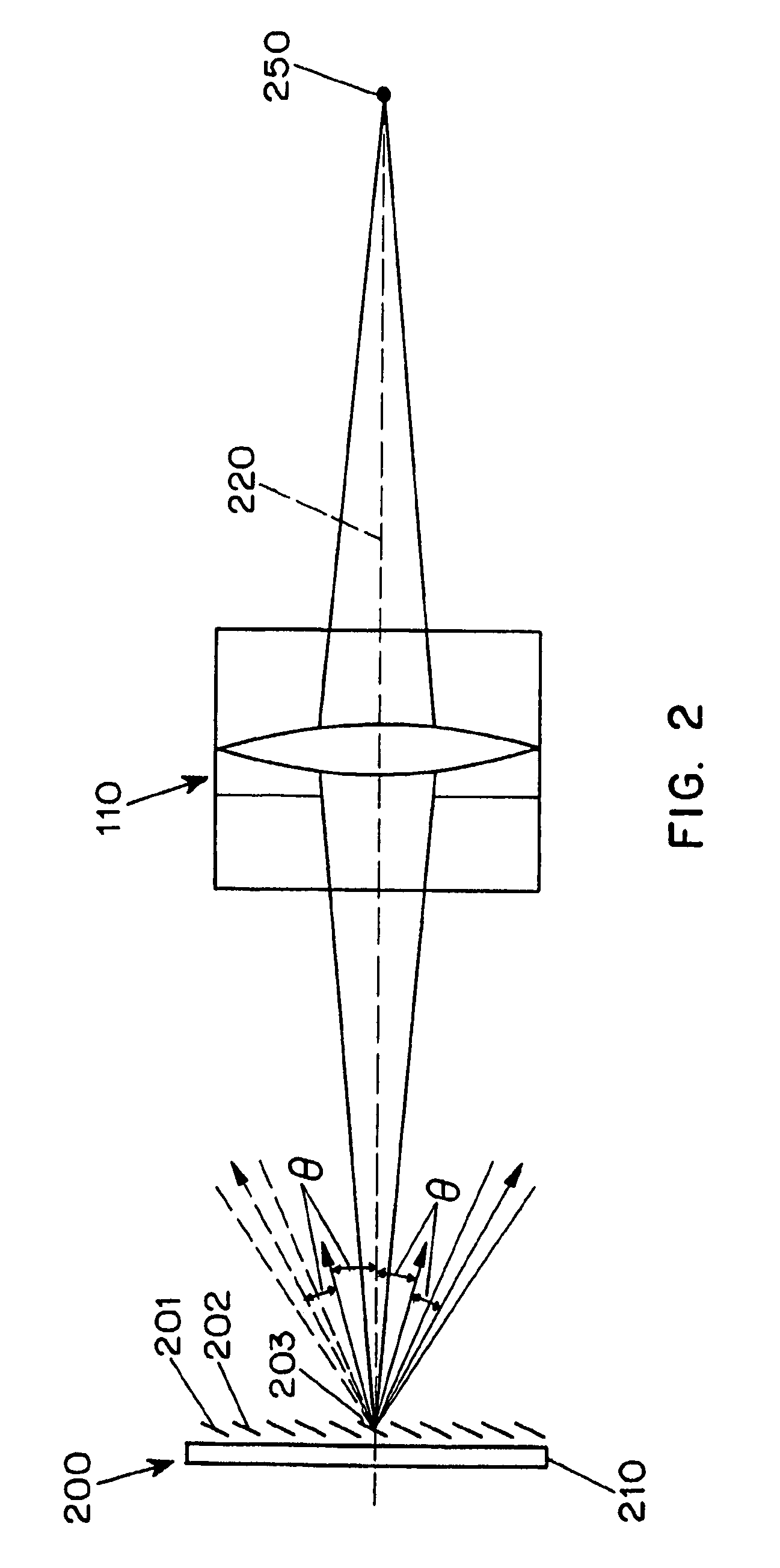Adaptive imaging using digital light processing
a technology of adaptive imaging and light processing, applied in the field of adaptive imaging using digital light processing, can solve the problems of increasing costs, poor image quality, and end up being too dark and noisy in the dark areas, and achieve the effect of reducing costs
- Summary
- Abstract
- Description
- Claims
- Application Information
AI Technical Summary
Benefits of technology
Problems solved by technology
Method used
Image
Examples
embodiment 300
[0054]Referring next to FIG. 3, an embodiment 300 suitable for low resolution spatial image modulation will be explained. When a DMD is placed in front of an image, it can be used to modulate the imaged light rays. In this case, given a finite imaging aperture, a neighborhood of micromirrors 301, 302, 303 (rather than a single one) modulate the radiance of a scene point before it is imaged by a pixel 312 on the detector 140. Therefore, the irradiance of the pixel can be controlled by controlling a set of micromirrors, rather than a single one. In this case, the effective modulation function ends up being smooth or blurred, and the irradiance at any given pixel 311 cannot be controlled without effecting the irradiances of neighboring pixels.
[0055]In many applications smooth modulation functions will suffice and hence this configuration is a useful one. For instance, when the modulator is used to compensate for smoothly radiometric effects such as vignetting, low-resolution modulation...
embodiment 500
[0057]Referring next to FIG. 5, an preferred embodiment 500 suitable for high resolution spatial image modulation will be explained. In this embodiment, the scene is imaged onto the DMD 200, where the DMD plane is frontal, i.e., perpendicular to the optical axis of the imaging lens. When the micromirrors 501, 502, n, are located on a frontal plane, they are all oriented at one of the two possible tilt angles with respect to the plane. Each scene point is focused onto a single micromirror. For example, the light cone behind the lens 110 corresponding to a scene point 515 is reflected by the corresponding micromirror 505. Therefore, the micromirror serves as a virtual scene point that is located on the DMD plane. A relay lens 510 is then used to re-image the virtual scene point that is located on the DMD plane onto a single pixel on the image detector 140, e.g., the virtual scene point located on mircomirror 505 is re-imaged onto pixel 525. Since the light cones are reflected by the D...
embodiment 600
[0060]Referring next to FIG. 6, an embodiment 600 suitable for non-homogeneous image sensing will be explained. The embodiment is identical to that shown in FIG. 5, except that the image detector 140 is replaced by detector 610 adapted for a non-homogeneous pixel sensitivity to the various characteristics of light, e.g., color, spectrum brightness, or polarization. For example, a detector with a Bayer color mosaic may be used. Since the dynamic range of each pixel can controlled independently, the non-homogeneous nature of the detector is not an issue. The captured high quality data can be used to compute a high dynamic range color image.
[0061]Such non-homogeneous sensing is not restricted to color; the pixels may have different brightness sensitivities, e.g., as disclosed in S. K. Nayar et al., “High dynamic range imaging: Spatially varying Pixel exposures,”Proc. of Computer Vision and Pattern Recognition '00 (2000), the contents of which are incorporated by reference herein, or di...
PUM
 Login to View More
Login to View More Abstract
Description
Claims
Application Information
 Login to View More
Login to View More - R&D
- Intellectual Property
- Life Sciences
- Materials
- Tech Scout
- Unparalleled Data Quality
- Higher Quality Content
- 60% Fewer Hallucinations
Browse by: Latest US Patents, China's latest patents, Technical Efficacy Thesaurus, Application Domain, Technology Topic, Popular Technical Reports.
© 2025 PatSnap. All rights reserved.Legal|Privacy policy|Modern Slavery Act Transparency Statement|Sitemap|About US| Contact US: help@patsnap.com



